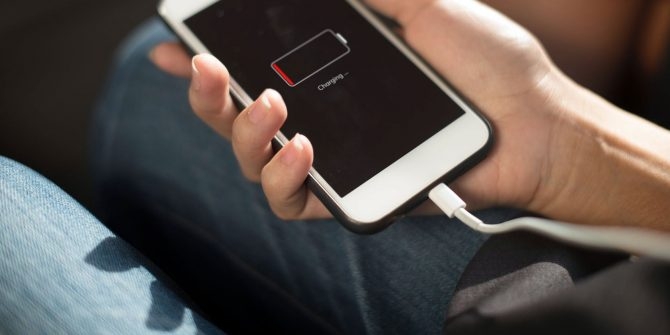Why weren’t phone, cell and data companies ‘in the room’ at the Emergency Management Office during last week’s hurricane? Why is Nova Scotia Power still burying its head in its profits instead of burying its overhead cables? And other tales from an OMG week.

“When the last downed branches are shredded, I trust NSP’s and Eastlink’s senior managements will review their inadequate phone systems. The rage caused by endless busy signals, or the if-you-want-to-go-to-voice-mail-hell-press-one ‘automatic’ phone systems, is still widespread throughout the community.”
Brian Flemming
Halifax Daily News columnist
Oct. 8, 2003
“Some Nova Scotia mobile phone users are questioning why they weren’t able to make calls, text or use data to search for information online in the days following Hurricane Dorian.”
CBC News
Sept. 10, 2019
And so it continues. On Sept. 3, 2019, as deadly, destructive Dorian zeroed in on southeastern US coastal states, the four biggest American wireless carriers — Verizon, AT&T, T-Mobile and Sprint — all pre-emptively announced plans to help their customers stay connected.
Verizon, for example, offered unlimited calling, texting and data from Sept. 2–9 for those in the hurricane’s crosshairs; its Florida stores opened up free charging stations and pledged “free one-time water damage services and discounts on portable power supplies.” The others offered similar breaks.
Those American carriers were responding to a request from their regulator, the US Federal Communications Commission. “We have worked to ensure that communications providers and power companies closely coordinate their activities as needed,” explained FCC Chair Ajit Pai.
It’s good to know someone was minding the store.
But that was there. And then.
Here and now?
In our here and now, in fact, it took Telus, one of Canada’s largest telecom companies, until Sept. 7 — two days after Dorian had already left the Nova Scotia building — to finally announce it might just waive voice, text and data overages for affected customers during the week after the storm. Initially, however, Telus refused to explain how customers were supposed to take advantage of that. (Later, it did say the credit would be applied automatically to bills.) Rogers eventually followed Telus’s belated lead but added that its customers would have to proactively ask for the waiver. Thanks… for not much. Eastlink? The company wasn’t saying exactly what it would do. As a spokesperson put it to the CBC: “As it relates to data charges, we want our customers to know that we will absolutely take care of them and treat them fairly.” Gee, thanks. That’s reassuring. Not. But Eastlink at least responded to the CBC’s request for information. At Bell Aliant, they must have been too busy counting their excessive profits to notice the request for comment. As of Sept. 11, they’d explained nothing.
Communication?
Carolyn Fraser, whose roof caved in during Dorian’s smash-and-crash push through Nova Scotia, tried to use her cellphone to search for critical-to-her information about the availability of shelters. No service. She’s now one of many local residents asking where our cellphone and data service providers disappeared.
“Cellphones are emergency items,” she told the CBC. “We need them to keep in touch with people. We need them to keep in touch with 9-1-1 and any of the emergency services.”
Luckily, we were out of province when Dorian was in the house, and my wife and I were both able to use our cellphones to call NSP seeking more accurate updates on when our service might be restored than anything we could discover on their confusing outage map. The good folks at the NSP call centre did call us back. They left messages on our landline, which of course we couldn’t access because we had no power. We were only finally able to listen to their no-longer-relevant messages after our power had finally been restored on Friday, six days after we lost it. And so it went.
While we may think of our phones, cellphones and the internet as essential services, neither the CRTC, the FCC-equivalent that supposedly oversees our telecom industry in the public interest, nor Innovation, Science and Economic Development (ISED), the federal agency that supposedly coordinates assistance with telecommunications companies during emergencies, requires those providers to have sufficient back-up power to keep their cell towers and other critical infrastructure operating during a major power outage.
“The resiliency of the telecommunications networks is the responsibility of telecommunications service providers,” punted a spokesperson for ISED.
Really? Did no one learn any lessons from Hurricane Juan? Or did some accountant somewhere decide that providing the appropriate level of backup redundancy — increasingly essential as climate change makes last decade’s “storm of the century” next decade’s “storm of the week” — might shave a few cents off their company’s shareholder dividends.

Closer to oversight home, Nova Scotia’s Emergency Management Office, which coordinates emergency preparedness and response for the province, lists its “partners” on its website. Although a spokesperson for EMO tells me “the list on our website doesn’t reflect all of our partners,” those that are listed include only the RCMP, municipal police agencies, the Red Cross, Nova Scotia Power, Public Safety Canada and the Canadian forces. Where are the phone companies, the wireless industry, data providers? Indeed.
Although there was plenty of public concern about abysmal cell phone service during Juan, it is instructive to read EMO’s own official Report on the Emergency Response to Hurricane Juan published in late October 2003. The largely self-congratulatory 11-page document, which includes a section on “Lessons Learned,” never once even uses the words “cellphone” or “telecommunications.”
Will it be déjà vu all over again in Dorian’s aftermath?
Perhaps the most encouraging response to come out of the Dorian mess is that it seems to have belatedly awoken Premier Stephen McNeil to an issue that has been festering for many since at least 2003. McNeil now says he wants telecommunications companies “in the room” with other EMO partners during big storms “so as we begin to plan, we can make sure that we are putting that in the mix of critical infrastructure that has to be adjusted as quickly as possible.”
That would be a small but positive step. Let’s hope it happens before the next Dorian, which could — uh… — happen anytime.
Oh, and one last thing before we leave this storm. One of the many other issues Dorian brought to the fore — again — is the vulnerability of our above-ground electrical and telecommunications wiring systems. While it is daunting to contemplate the cost of burying existing cables, it should at least be a no-brainer to require all new construction projects to put all of its cabling underground.
Should…

During last year’s negotiations over Armco’s controversial proposed office-commercial Willow Tree high-rise tower at the corner of Qunipool and Robie, I wrote this…
[Halifax] councillors eventually tossed in a few caveat “demands,” including requiring that “overhead electric/utility wires be buried along the Quinpool Road and Robie Street boundaries of the development.”
Undergrounding, as it’s called, isn’t only aesthetically more pleasing than a tangle of poles and sky-polluting wiring. It can also help cut down on the number of power outages caused by wind and weather.
According to a recent five-year reliability report prepared for the Florida Public Service Commission, for example, Florida Light & Power reported that the 40 per cent of its customers who are now served by underground wiring suffered “significantly” fewer outages and were without power for shorter periods of time per outage than their fellow overhead customers.
The benefits of undergrounding are not exactly a recent revelation. According to a 1962 report by the American Society of Planning Officials: “The Canadian Federation of Mayors and Municipalities… actively promotes underground wiring, not only in new subdivisions, but also in downtown areas and older residential neighborhoods, where the Federation urges the gradual burying of existing overhead systems.” Or so it says.
In fact, as last week’s Halifax staff report noted, the city’s own Municipal Planning Strategy’s draft Development Agreement policy already “requires that all electric and utility wires adjacent to the development shall be buried along Quinpool Road and Robie Street. This is not a stipulation of Bonus Zoning, and would be a requirement of the development whether it was constructed to a maximum overall height of 62 metres or 78 metres.”
Uh… In other words, this was not really a concession by the developer at all, but a requirement of the process.
Whatever…
The staff report then went on to note:
“In conversations with the applicant, their engineers in coordination with NS Power staff have indicated that undergrounding overhead wire in this location may be problematic.”
Problematic?
Well, it seems that Nova Scotia Power — the private electricity monopoly prone to inordinate numbers of power outages caused by salty fogs, stiff breezes and other “unanticipated” acts of life — isn’t keen to prioritize the opportunity offered by a major new development to speed along its own “current planning to facilitate undergrounding.”
Despite the long-term benefits for customers and, ultimately, the utility, undergrounding is expensive in the short term, and Nova Scotia Power would apparently rather increase immediate payouts to shareholders than invest for that long term… But that’s another one of those columns for another day.
So Nova Scotia Power doesn’t want to take advantage of the opportunity to goose its own undergrounding plans, and the developer doesn’t want to fulfill its requirement to bury the cables.
Which brings us to the convenient out offered in the staff report:
“At the direction of Council, undergrounding of overhead wire is currently required in the draft MPS policy. Should it be the desire of Council to remove this requirement from the policy, it is most easily done at the time of first reading of the policy to ensure clarity exists in advance of a Public Hearing as to the requirements of the policy under consideration.”
When faced with the choice of good planning for citizens versus convenient planning for developers, council knows how high it will jump. Higher.
After a 90-minute debate, followed by a two-hour closed-door meeting between top city officials and a representative of the developer — no, you really can’t make this stuff up! — council voted 13–3 in favour of a staff-massaged, Armco-blessed motion to give the developer a myriad of options to much-less-than-meet what would have been its obligations under the Centre Plan and the Municipal Planning Strategy.
Armco can bury the power lines and include 10 affordable housing units in its project;
Armco can include 20 affordable units, and skip the wiring entirely;
Armco can include the 10 units, and pay $900,000 into a non-existent affordable housing fund in lieu of wiring;
Armco can say screw the housing altogether, and pay the city $1.8 million into that same non-fund.
We had front row seats to watch the sausage of yet another future storm disaster —one of council’s own making — get made.
And so it goes. On. And. On.
***
There are days when the news of the day makes it almost impossible to process it all. except in text-speak. As in…
OMG: The $8.5-million, your-tax-dollars-at-work-and-rest Bar Harbor Ferry Terminal renovation still isn’t complete! It’s now almost three months after the ferry-season-that-wasn’t was scheduled to begin and less than a month before its Thanksgiving end. Despite that, the government insists this sailing season isn’t dead until… well, until it says it is. “I am still optimistic that we will have sailings this season,” Transportation and Infrastructure Renewal Deputy Minister Paul LaFleche confidently told a legislature committee last week.
LOL: The provincial government refuses to release details about its plan to use the failed P3 model for a planned highway twinning project and a major new hospital project, including even allowing us to read the report it commissioned, and which it claims supports its decision. “Isn’t it a risky and irresponsible decision to go ahead with new P3 builds without revealing the full details, and when the government cannot point to a single P3 success story?” logically asked NDP MLA Susan LeBlanc. Oh, but we have a current success story, insisted LaFleche. Ta da! Halifax’s new convention centre! Laugh out loud. Or cry in your beer.
WTF: Nova Scotia Justice Minister Mark Furey still refuses to publicly apologize to Glen Assoun. We know Assoun spent 17 years in prison for a murder he didn’t commit. We know the police badly botched the investigation And disappeared documents that might have ended this injustice before it began. We know Assoun was fully exonerated by the courts this spring. We even know Ottawa and the province have now agreed to provide Assoun preliminary compensation while they figure out how much he is owed for the years of life he didn’t get to live, thanks to the failure of our justice system. And yet… And yet Mark Furey still isn’t ready to apologize. WTF indeed.
This column first appeared in the Halifax Examiner Sept. 16, 2019.




 STEPHEN KIMBER, a Professor of Journalism at the University of King's College in Halifax and co-founder of its MFA in Creative Nonfiction Program, is an award-winning writer, editor and broadcaster. He is the author of two novels and eight non-fiction books. Buy his books
STEPHEN KIMBER, a Professor of Journalism at the University of King's College in Halifax and co-founder of its MFA in Creative Nonfiction Program, is an award-winning writer, editor and broadcaster. He is the author of two novels and eight non-fiction books. Buy his books